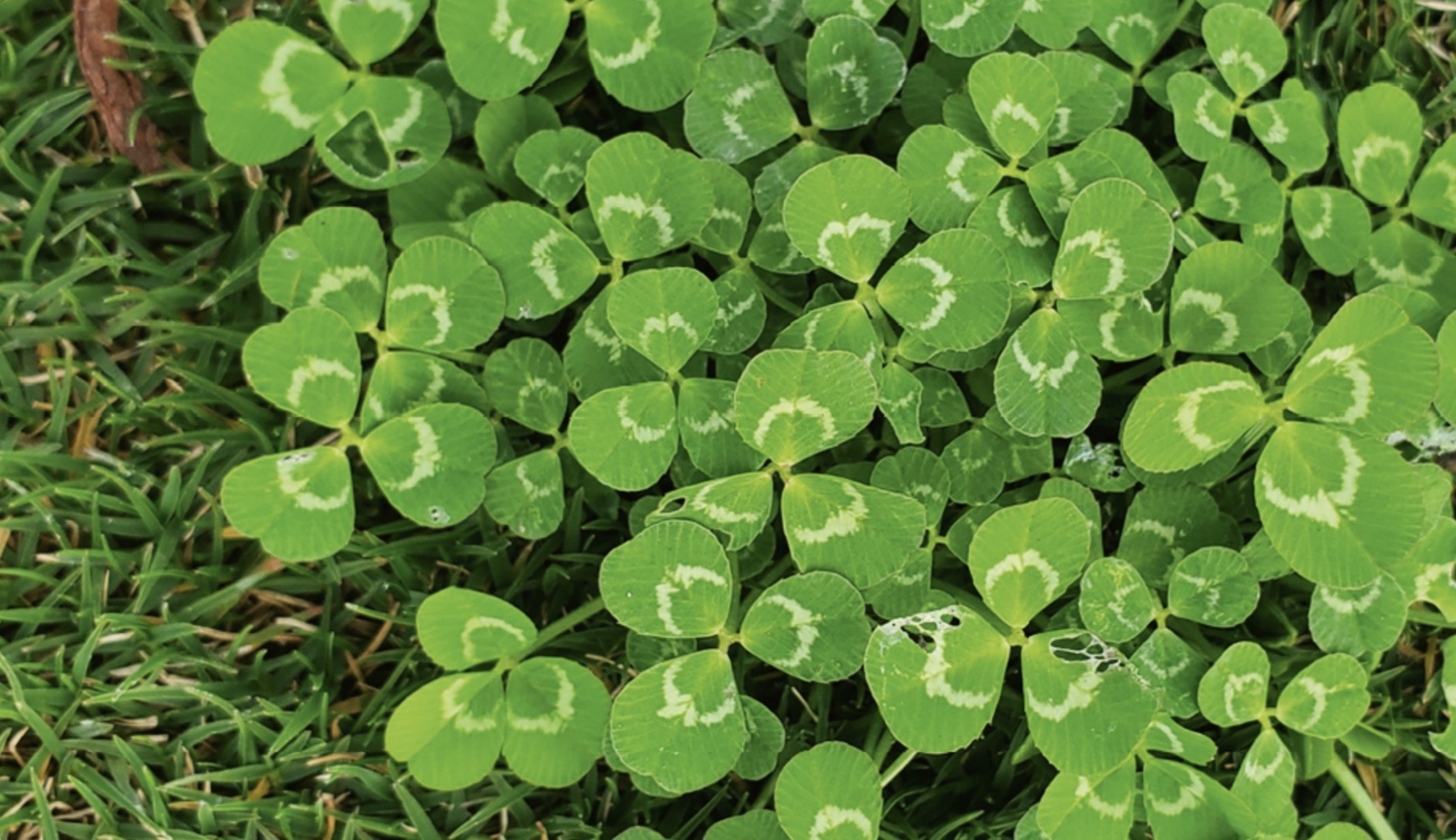How To Conquer Clover

29 September 2021
Clover (Trifolium)
- Clover is not that much of an undesirable weed and can be easily managed in most cases.
- In some parts of the country, clover is intentionally added to lawns to assist with drought.
- Keeping your lawn’s nutrient and nitrogen levels at the right rate will reduce clover infiltration.
Clover may be a lucky charm, but you may not be so lucky to have it infest your lawn. It is a common lawn-weed and as far as weeds go on the ease-of-eradication-scale; clover is simple to control in most cases.
How To Identify Clover
Clover can be easily identified in your lawn by its oval-shaped leaves. It will commonly grow in 3 leaflets (four if you’re lucky!) with a white circular marking across all of the leaves. Clover will have a creeping stem that touches the ground and will produce either a white or pink flower depending on the species.

Treatment
There are a number of broadleaf weed and clover specific selective weed sprays like Amgrow Bin Die and All Purpose Weed Control that will do the job relatively quickly. Amgrow Bin Die comes in a concentrated form and will need to be mixed up with water in a knapsack or pressure sprayer. All-Purpose Weed Control has an easy-to-use clip-on hose attachment.
Nitrogen
In some cases, a higher nitrogen fertiliser program will more than likely prove just as effective.
Clover is one of those legume plants, like beans and lucerne or alfalfa. It will draw nitrogen from the air and stores it in its roots. As the roots die back, the nitrogen is replenished into the soil but where there is sufficient nitrogen in your soil to keep your lawn healthy, the clover struggles to survive. In most cases when you see clover growing in your lawn it means that there isn’t enough nitrogen. Lawns love nitrogen, while clover hates it, so increasing the fertiliser on your lawn is a must if you want to send a clear message of clearing your lawn. Use what they call a high NPK fertiliser, one that has high levels of nitrogen, phosphorous, and potassium – something like Lawn Solutions Premium Fertiliser.
Read the label for the best advice for the rate you should apply and be sure to water in well. Following one or more applications your lawn should look in great condition with less clover content. Keeping your lawn’s nitrogen levels in check by fertilising it will prevent clover from coming back. Some people chose to live with a smattering of clover on their lawn. Depending on your grass type, the two may co-exist without being too much of an eyesore. Mowing the clover back will help keep it under control to some degree but won’t prevent it from coming back. Clover has no issues with being mowed nice and short, but your grass doesn’t love it. Cutting your lawn short will be appreciated by the clover but will stress out your grass.
So, mowing high will give your lawn a leg-up on the clover. ‘Good luck’ with these tips on getting rid of your clover, if that’s what you choose to do! Lawn care doesn’t need to be difficult and simple hints from Lawn Solutions Australia and their network of member turf growers and Lawn Solutions Centres Australia-wide can help with products to keep your lawn in top condition this summer.
As always, if you have any more questions please don’t hesitate to contact us for free expert advice on 1800ALLTURF (1800255873) or 07 5543 8304.
WOULD YOU LIKE MORE INFORMATION ON CLOVER?
Contact us for expert advice, or come & say hi at our office in Tamborine!




